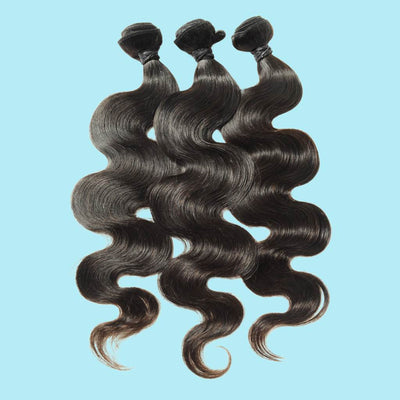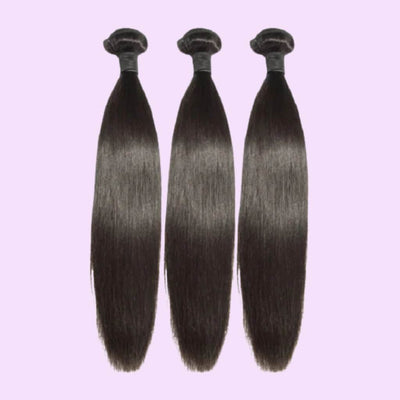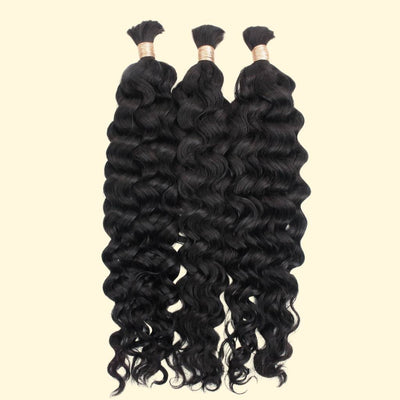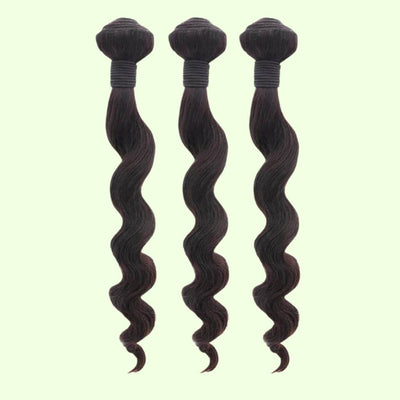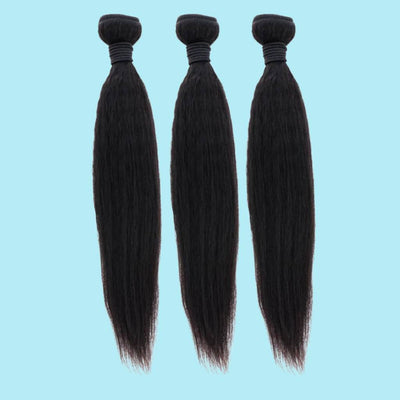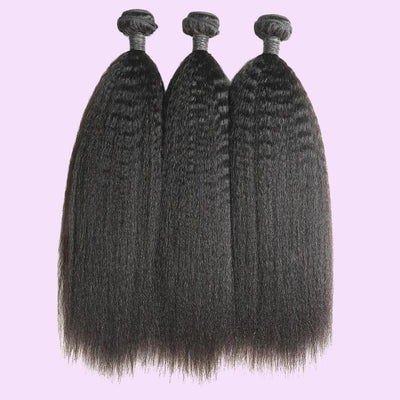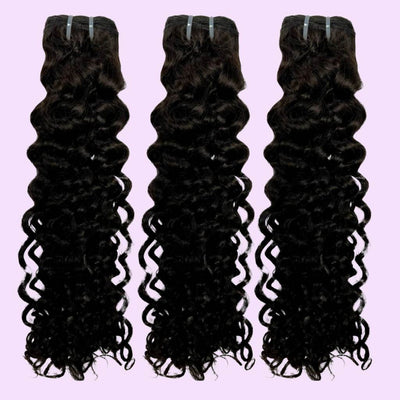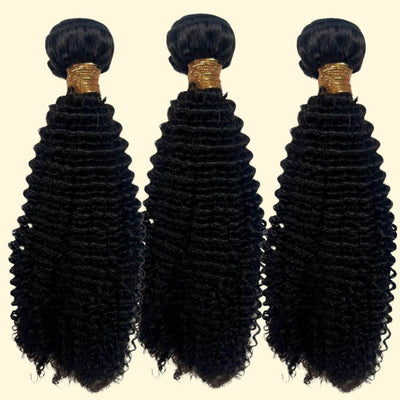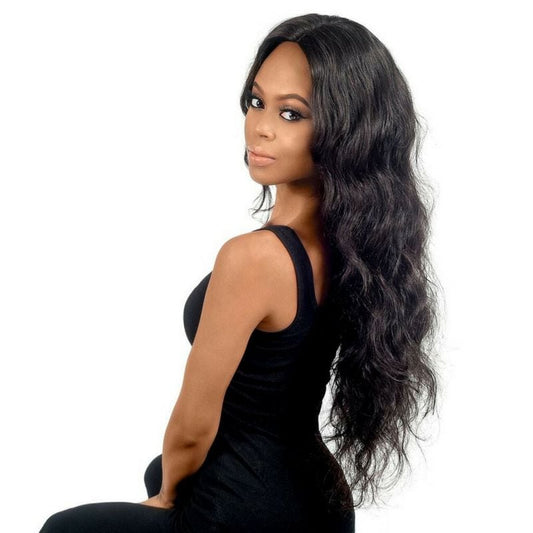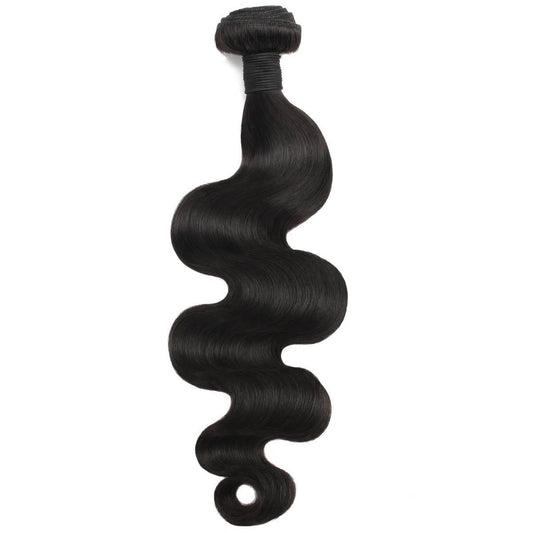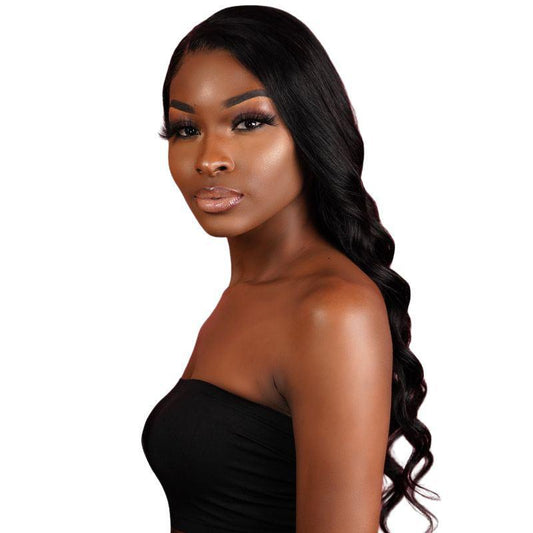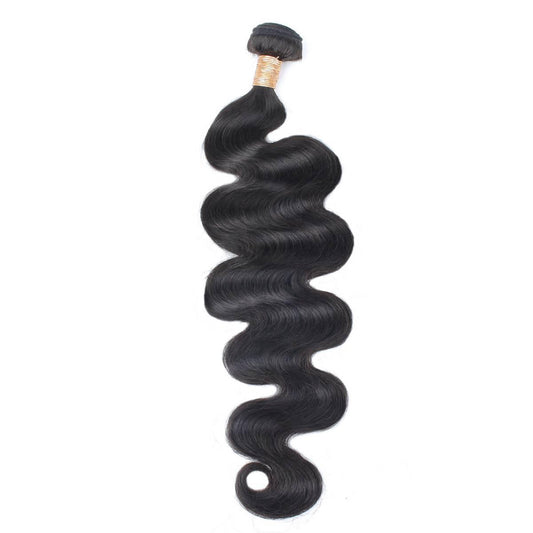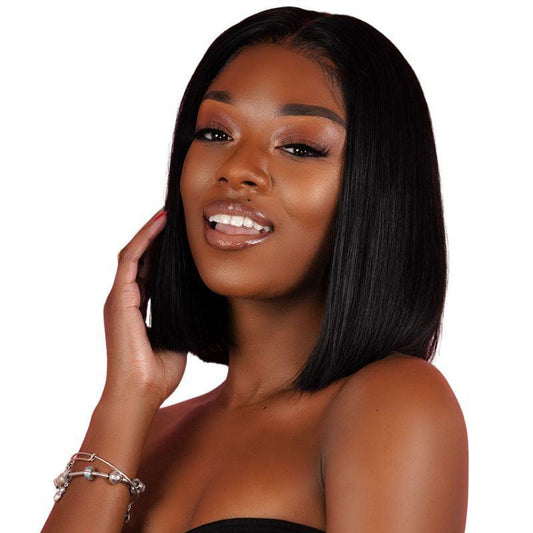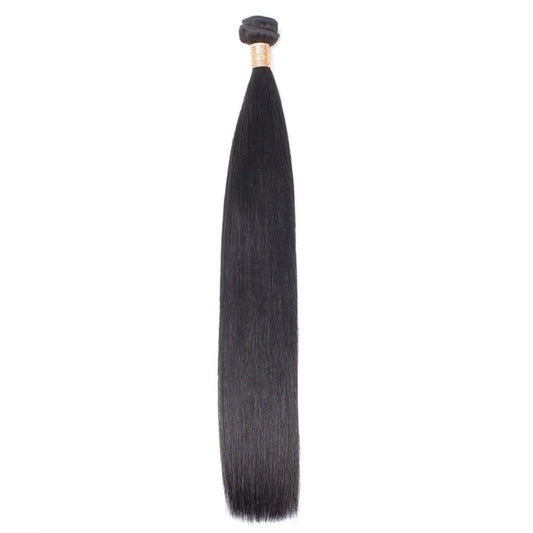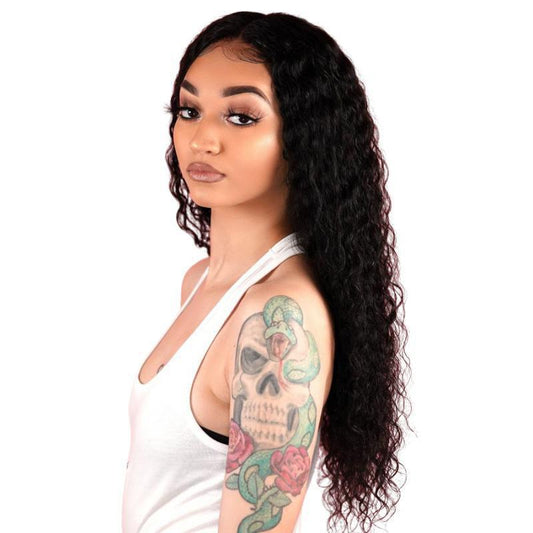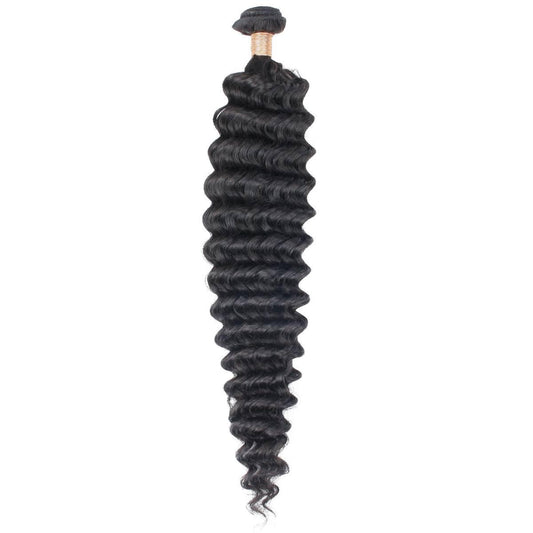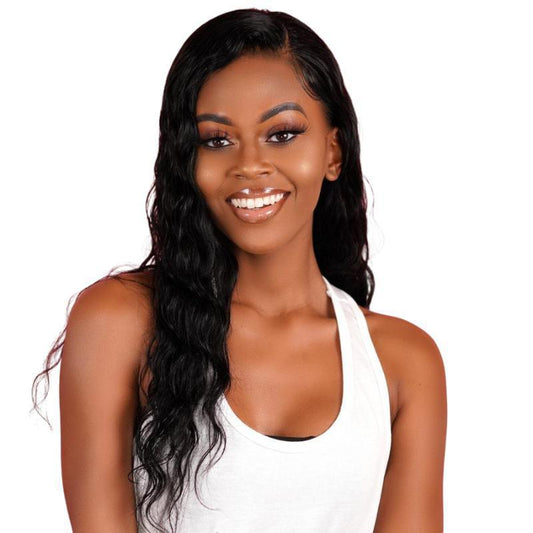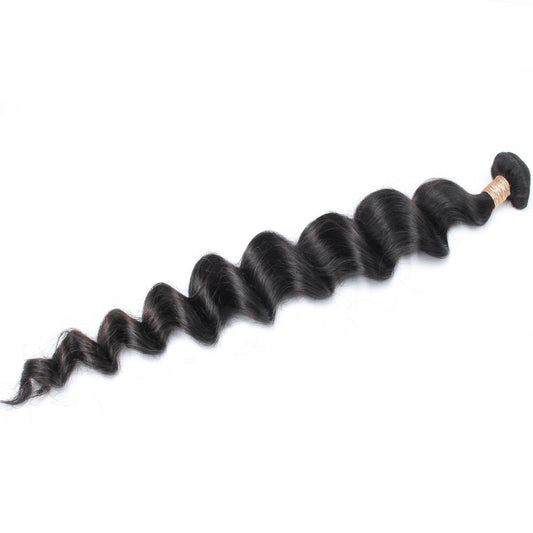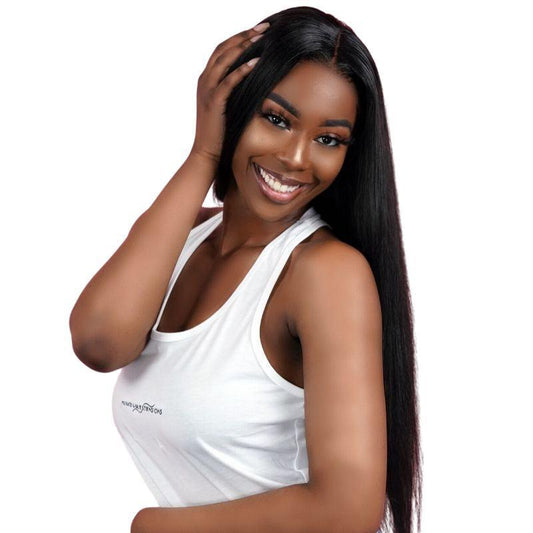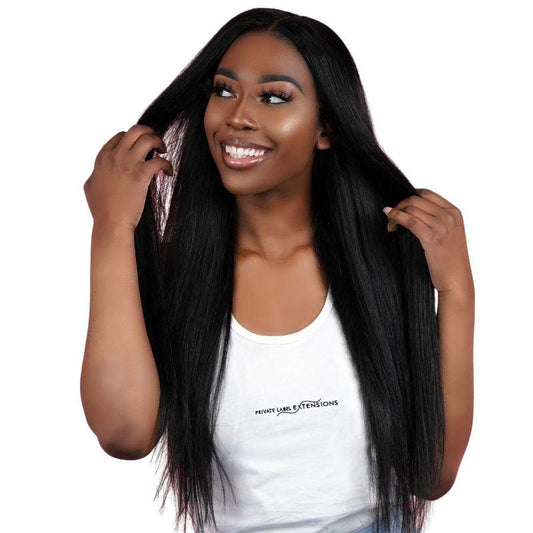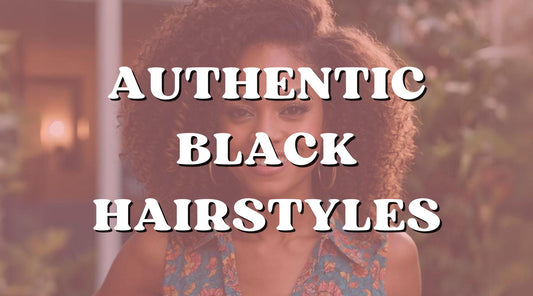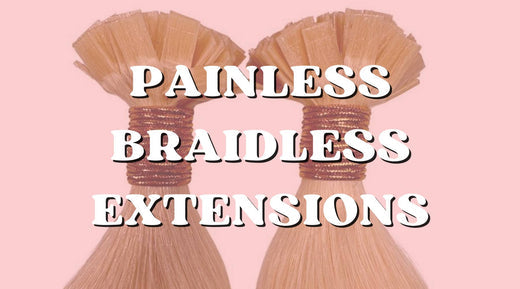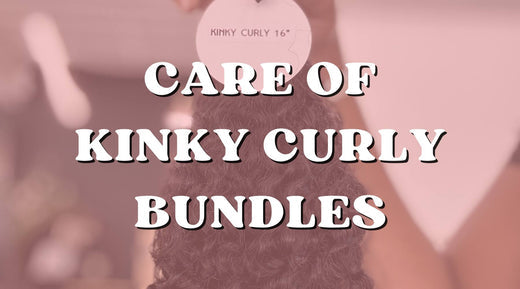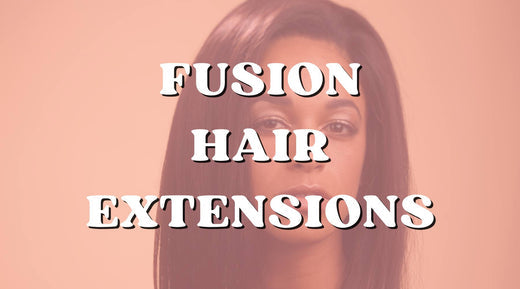1260 Memorial Drive
Atlanta, Georgia 30316
404-458-1330
The Ultimate Guide to Sew-In Hair Extensions: Everything You Need to Know
Mikey MoranSew-in hair extensions are returning, and the girlies are embracing it wholeheartedly.
It’s no secret that women have ditched the more traditional sew-in hair extensions over the years in favor of glueless wigs and lace frontals.
However, with the recent clamor for protective styles, it’s now ‘in with the old’ and out with the new!
If you haven’t already booked your sew-in appointment, peer pressure has nothing on you, or you’re terrified it has not turned out great.
If the latter is a big issue for you, relax, as we’ve put together the ultimate guide to sew-in hair extensions and how to get that seamless look that’ll get everyone talking.

Overview of Sew-In Hair Extension
Before getting into the main business of sew-in hair extensions and all you need to know, it’s essential we first discuss the basics:
What Is a Sew-In Hair Extension?
The name sew-in pretty much gives an idea of what these types of hair extensions are or are used for, but just in case it’s unclear to you, let’s break it down a bit more.
Sew-in hair extensions are what you’d call weaves.
They’re extensions that you sew onto a base of braided hair to add length and volume. Sounds easy if you know a bit about dressmaking, but trust us, it’s a bit more technical than that.

What’s the Purpose of a Sew-In?
Back then, the sole purpose of getting weaves might’ve been to conform to society, especially for black women who mostly had to ‘hide’ their natural kinky curls, especially in the workspace. But now, it’s all about protectiveness. Back when sew-ins were the new kid on the block, it was typically criticized for being too tight and causing damage to the hair.
But today, it’s made a complete one-eighty and is the second choice when caring for your natural hair. Second, because, of course, regular braids would always top the list.
Thanks to the advancements in hair care, women now know exactly what their hair needs to thrive. As a result, they’ve created better sew-in installation techniques that have raised the rejected sew-ins from grass to grace.

Benefits of Sew-Ins
You know how we all go ‘lace where?’ but we have no idea one half of the lace is already lifting? Yeah, that’s embarrassing, and it’s guaranteed not to happen with sew-ins. Sew-in hair extensions aren’t just a good bet if you’d like to customize the texture and style.
They’re also a great way to add instant length and volume to your hair. And when we say volume, we mean it.
Flowing hair, shorter locks, fuller locks? Sew-ins have got you covered, and you don’t even have to worry about it slipping off like with clip-ins.
Another great thing is that sew-ins have you looking high maintenance while on a low maintenance budget. Because once they’re in, these extensions don’t need you fretting over them compared to human hair wigs.
Who Needs Sew-In Extensions?
Now you may be wondering, who needs hair extensions? The answer is everybody and all of us, especially if you’re looking to begin caring for your natural hair and leading it down a healthier path with a hairstyle that requires minimal effort.

Type of Sew-In Hair Extensions
Have you decided and are wondering what type of weave to choose at your next appointment?
Let’s help you with that!
Virgin Hair Extensions: Virgin hair is exactly what the name implies: Human hair that has never been colored, bleached, permed, or exposed to damaging and harsh heat. Plus, it also boasts some benefits, including its strength, durability, and the fact that it’s less prone to damage and breakage.
Raw Hair Extensions: Not to be confused with virgin hair, raw hair extensions are 100% human hair that is chemically unprocessed and usually sourced from single donors. As a result, raw extensions are generally available in limited colors, hair textures, and natural hair patterns. But the good thing is that they last for years and get better with every wash.
Synthetic Hair Extensions: Synthetic hair extensions are man-made fibers manufactured from polymers designed to look and feel as similar to human hair as possible. Although this type of hair extension gets a lot of hate in the market cause it’s not a durable choice, it is much cheaper than human hair.
Blended Hair Extensions: Finally, blended hair extensions are simply a mix of natural human hair and synthetic hair. Unlike synthetic hair, hair blends look a bit more realistic and are more versatile. It’s also a great option if you’re in the market for something cheap and classy.

How to Select the Right Hair Type and Texture for Your Sew-Ins
When selecting the perfect hair type for your sew-in, there’s much to remember.
Hair Match
First is ensuring that the hair matches your natural hair, especially if you choose a leave-out style. You can’t use a straight hair extension for your sew-in when your natural hair is curly.
Texture
The great thing about sew-ins, especially if you are not opting for the leave-out style, is that it doesn’t have to be your natural hair texture. You can choose curly, straight, body wave hair, or whatever you want - it’s up to you!
Length, Color, and Density Consideration
Depending on your preferences, you can go for short weaves between 8 to 12 inches or the ‘buss down’ units as long as 32 inches! And when it comes to color? There’s a wide range to choose from, whether you want to go blonde, ginger, or red! Finally, the density of the hair is essential so that it is neither too thin nor too voluminous.
Versatility Consideration
Finally, you can be as versatile as you want with sew-ins, but you’ve got to make that decision from the start. Would whatever weave you choose to use be adaptable and functional? Bear that in mind before making a choice. Once all of this is considered, the moving step, the installation process, is next.

How to Install a Sew-In Hair Extension
The installation process is pretty straightforward. You don’t need to be a professional hairstylist to determine how it is done.
Cleaning Your Scalp
First, use a sulfate-free shampoo and wash your hair thoroughly to remove dirt or product buildup. Next, apply a conditioner for extra softness and hydration.
Braiding Your Natural Hair
Once your scalp is clean, dry your hair and braid it into your preferred pattern. This ensures your sew-in hair extension lies flat against your scalp for a natural look.
Choosing the Preferred Sew-In Method
Next, you will sew in the wefts of the extensions to the braids. It’s essential to begin from the back and work towards the crown of your head. Also, keep in mind that you’re to sew close to the scalp if you want to achieve a natural appearance. Just be careful not to prick yourself.
When you reach the top, you’re done, so cut the weft and secure it either by tying a knot or weaving the thread through the weft a few times. Or you can choose to go with the lace frontal or lace closure in front to give it a more seamless look.

The Luxury of Sew-In Hair Extensions
Sew-ins are starting to look pretty interesting, aren’t they? Just remember not to get them in too tight, sew close to the scalp, and ensure the hair’s density is precisely what you’re comfortable with, and you’ll be good to go. Are you still trying to decide what extensions to get?
Private Label has you covered!
From raw hair bundles to the most luscious and high-quality human hair weaves, we cater to your needs in the best way possible! All our hairs are available in different lengths, colors, and textures, so best believe there’s something you’d fall in love with!
Check out our website, get a hair extension, and join the family of satisfied customers! Remember, you can also visit a Private Label Hair Store near you for additional advice and be ready to get your hair game on.

